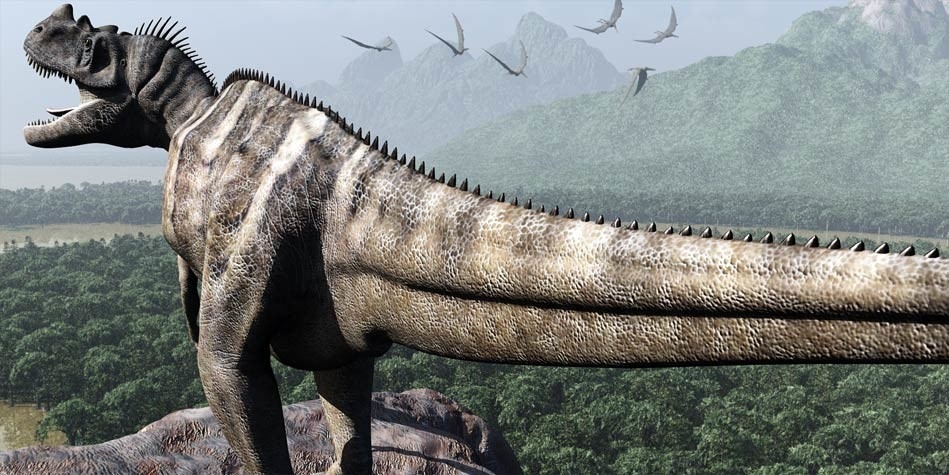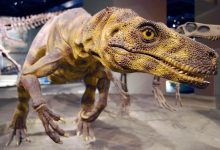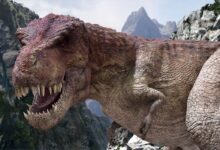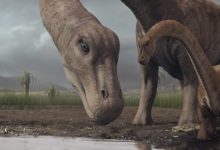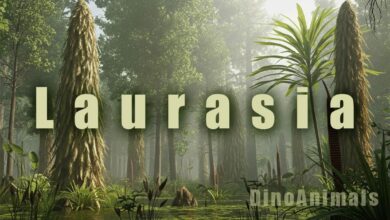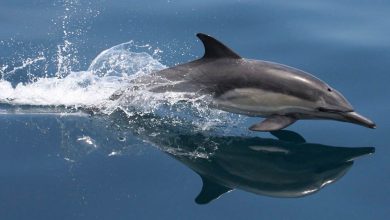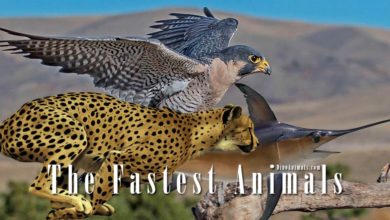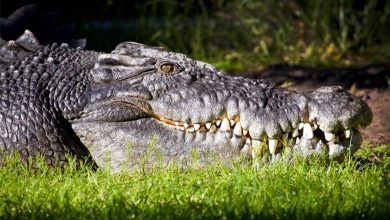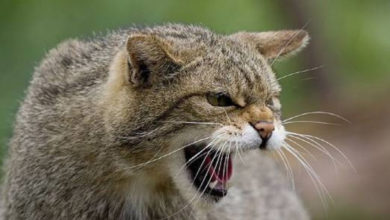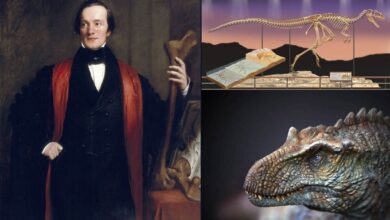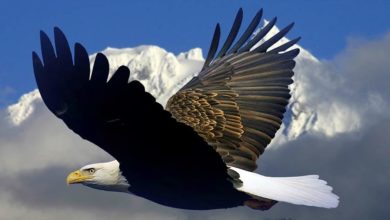Ceratosaurus – horned dinosaur
One could say – another typical dinosaur, nothing out of the ordinary. Granted, Ceratosaurus is one of many theropods. Furthermore, it did not stand out with neither size nor weight. Surely the size was key in the dinosaur world – even today it is commonly known that the bigger the scarier. Yet in case of this dinosaur, a large size may have not been so meaningful, as this lizard showed great dexterity in water, similar to modern crocodiles.
Classification
- Kingdom: Animalia
- Phylum: Chordata
- Clade: Dinosauria
- Order: Saurischia
- Suborder: Theropoda
- Family: †Ceratosauridae
- Genus: †Ceratosaurus
- Species:
- †Ceratosaurus nasicornis
- †?Ceratosaurus dentisulcatus
- †?Ceratosaurus magnicornis
Although two last species vary from the type species, some paleontologists have doubts about such a classification. Many believe that Ceratosaurus dentisulcatus and Ceratosaurus magnicornis prove that the specimen could vary within species. Accordingly, these two species are described as nomen dubium – unconfirmed.
Range and dating
Ceratosaurus lived in Late Jurassic (153-148 million years ago). Their remains were found in the North American Morrison formation (Utah, Colorado) and in the Portuguese Lourinhã formation so far.
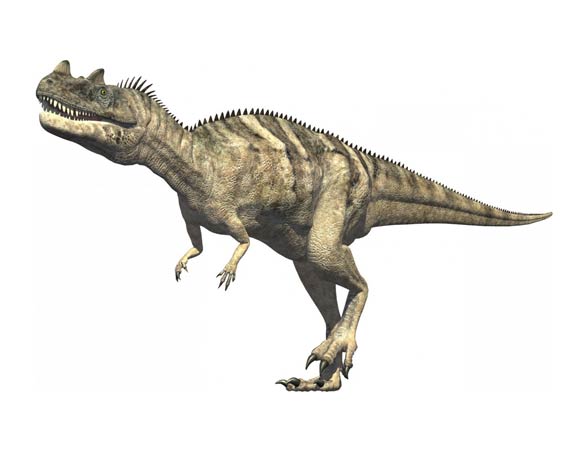
Characteristics
Appearance
It had much in common with other theropods, but it also had several unique features, e.g. a skull disproportionally large regarding the body size and crest-like horns on the tip of its snout and above its eyes. A carapace built of small osteoderms has appeared along the spine, which is unusual for theropods. The tail accounted for about half of the total body length, but it was rather thin and flexible.
Size
A type species specimen was 5.5 m (18 ft) long, yet there is no certainty whether it was a mature dinosaur. David B. Norman only estimated that Ceratosaurus could be up to 6.1 m (20 ft) long. This finds evidence in remains of an uncommonly large dinosaur found in Cleveland-Lloyd Quarry in the 1960s – 6.7 meters (22 ft) long.
Gregory Paul suggests that the first discovered specimen could weigh about 520 kg (1146 lb), but the large dinosaur unearthed in Cleveland-Lloyd Quarry could reach even 980 kg (2160 lb). In 2007 Foster estimated the Ceratosaurus weight based on the thighbone length. He concluded that these lizards could weigh from 275 kg (606 lb) (C. magnicornis) to 452 kg (996 lb) (C. dentisulcatus).
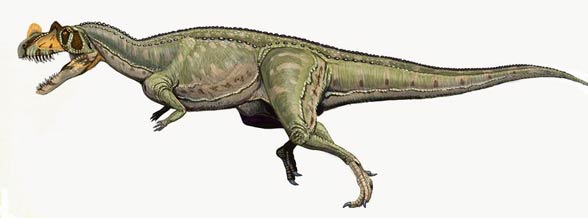
Horns
Othniel Charles March claimed that the unique, sharp structures at the tip of the dinosaur`s snout were used to fight other dinosaurs. Today this theory is seldom considered true. It seems that these horns` purpose was strictly visual.
The nasal horn is an extended nasal bone, while these located over its eyes are extensions of lacrimal bones. They did not grow as the dinosaur lived, but they were evolved as a distinctive bone outgrowth. Immature dinosaurs had only primitive primordia, which suggests that the horns gained shape with the dinosaur`s maturation process.
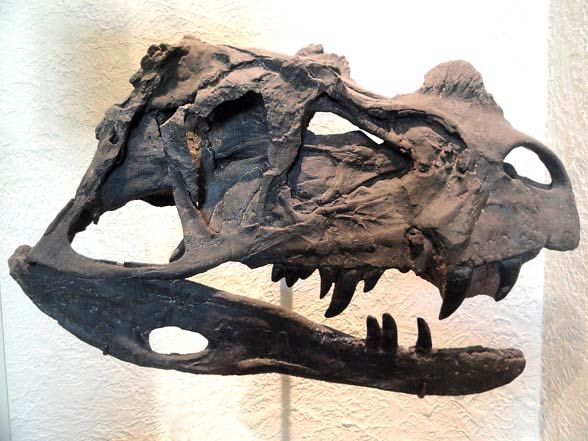
Osteoderms and tail
The one feature obviously unique among theropods are the dorsal osteoderms located along the spine (similar to e.g. Ankylosaurus). The purpose of this extraordinary creation has not yet been investigated. Seemingly, it served as a protection from other dinosaurs` attacks. This might suggest that in Ceratosaurus habitats there were also other larger predators. What were they? Do you happen to remember e.g. the Big Al – Allosaurus? On the other hand, it is possible that these osteoderms provided protection during intraspecific fights.
A thin and flexible tail was supported by long chevrons in the vertebrae. Supposing that Ceratosaurus ever entered the water, it could easily swim ably thanks to additional thrust coming from the tail, which would work similar to modern crocodiles` tails.
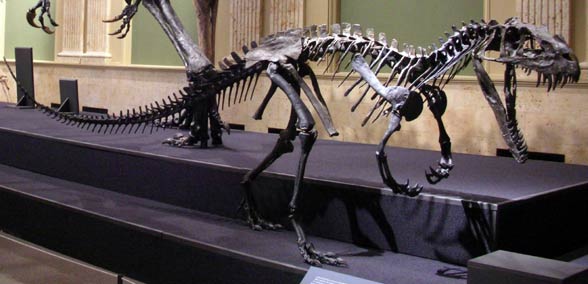
Diet
There is much evidence for Ceratosaurus being smaller than other large theropods, so it perhaps could have occupied a different ecological niche. It had a longer and flexible body and a crocodile-like tail would enhance its swimming skills. As a result, Ceratosaurus was a better swimmer than the massive Allosaurus.
Robert Bakker`s series of analyses suggest straightforward that Ceratosaurus hunted for aquatic animals such as fish and crocodiles. Still it could have hunted down a large dinosaur. Other researchers indicate that sometimes immature specimens could eat together with the ‘adults’. Perhaps it also could have been a scavenger.
Due to its size, Ceratosaurus could have been using water trails while searching for victims. Furthermore, thanks to its small size (for a theropod) it could have hunted in the thickets and woods.
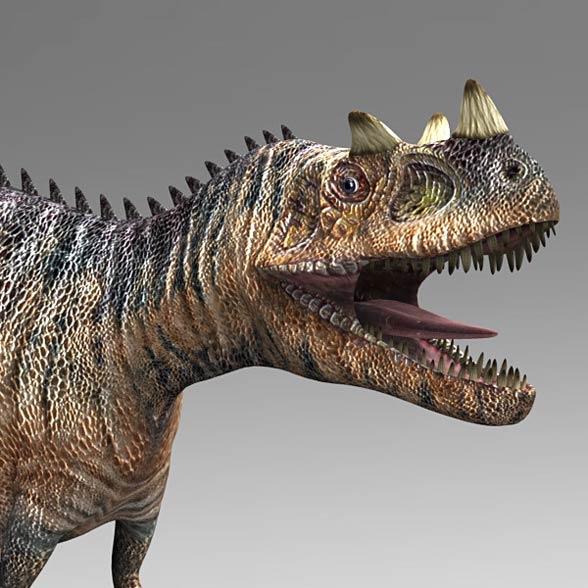
Detailed characteristic / size
Ceratosaurus
- Body length: 5.5-6.7 m (18-22 ft)
- Weight: 275-980 kg (606-2,160 lb)
- Dating: 150-145 million years ago, Late Jurassic, Kimmeridgian to Tithonian
- Range: North America (Utah and Colorado) and Europe (Portugal)
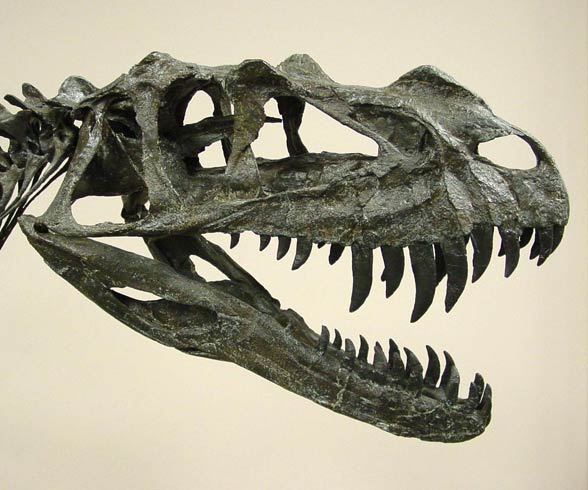
Ceratosaurus – interesting facts
- The general name may be translated to ‘horned lizard’. It is a combination of Greek keras/keratos -‘horn’ and sauros – ‘lizard’.
- Ceratosaurus appears for a short period in Jurassic Park III. Anyhow, it was Spinosaurus that was the main ‘villain’ in the movie.
- Ceratosaurus cohabited with Allosaurus, Apatosaurus, Torvosaurus, Diplodocus, Stegosaurus and Camarasaurus.
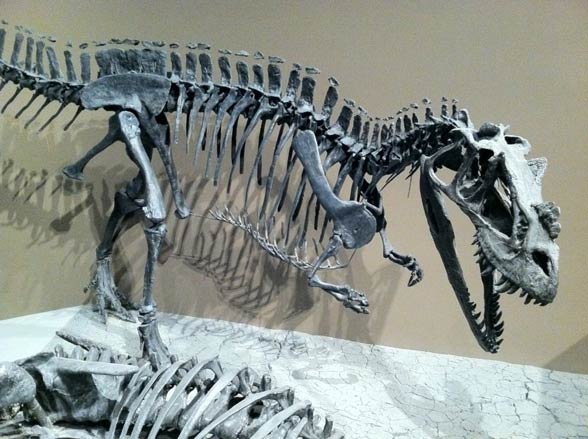
Image credits: Raul Lunia, paleoguy60
Recommended
- Dinosaurs
- Predatory dinosaurs
- Animals & dinosaurs records
- The fastest animals – Top 100
- The fastest birds – Top 10
- The longest dinosaurs. Sauropods Top 10
- The heaviest dinosaurs – Top 10
- The longest predatory dinosaurs. Theropods Top 10
- The heaviest predatory dinosaurs Top 10
- The longest and largest ornithopods
- The heaviest ornithopods Top 10
- The longest and largest ceratopsians
- The smallest dinosaurs Top 10
- The smallest sauropods Top 10
- The largest pterosaurs Top 10

